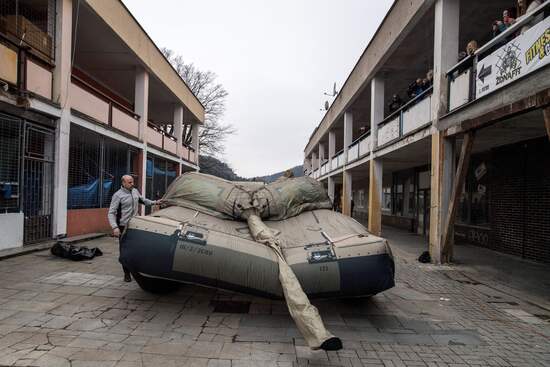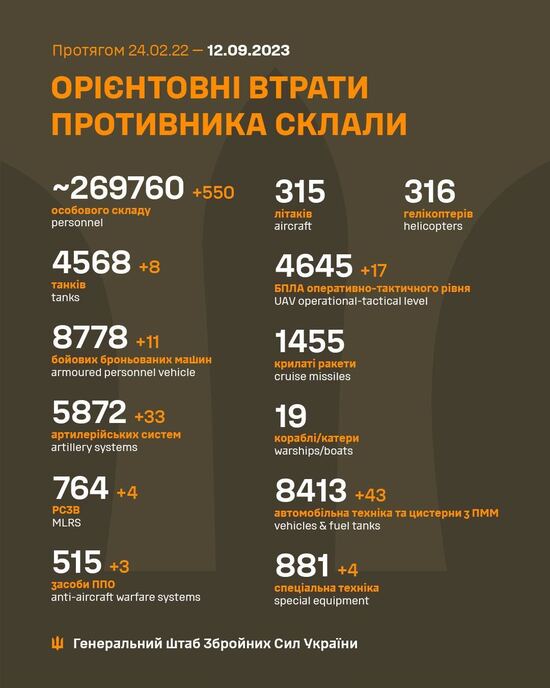Russian dictator Vladimir Putin was not at the G20. That’s partly because if he steps foot outside his own country, he stands a decent chance of being arrested and hauled off to the Hague. Of course, Brazilian President Luiz Inacio Lula da Silva has said that Putin is welcome to G20 next year … maybe. “If Putin decides to go to Brazil, it’s the justice system that will take the decision over whether he should be arrested, not the government or congress,” said Lula. “I didn’t even know this court existed.”
The court in question is the International Criminal Court (ICC). As it happens, Brazil is a signatory to the Rome Statute of the International Criminal Court, meaning that should a wanted criminal like Putin step on their soil, they are obligated by law to arrest him. Someone probably informed Lula of this fact and caused him to do a serious rethink.
But definitely, I think that Putin should test this. And why wait for next year? Just hop on the nearest state airlines flight and get off wherever it happens to come down. If he’s still intact at that point, Putin could explain to the nearest police officer how he believes he’s immune to international arrest warrants because Russia doesn’t believe in the ICC.
Just make sure someone has a camera rolling first.
On Tuesday, Putin didn’t engage with Russia’s diminishing fleet of airliners. Instead, he slouched in the chair of Russian media outlet Meduza to explain how Russia is winning the war in Ukraine so much. So, so much. Even if that “winning” seems to be in the form of Ukraine building momentum and advancing at almost every point of contact.
According to Putin, Ukraine has lost 71,000 people, 543 tanks, and almost 18,000 armored vehicles just since the counteroffensive began in June. That’s about 180 armored vehicles a day—quite an accomplishment. It’s even well above what Russian propagandists had proclaimed.
The number that Putin gives for Ukrainian tank losses is not just more than all the Western tanks that have been donated to Ukraine—even if you count those which have still not arrived—it’s more than a third of all the tanks Ukraine is estimated to have (including its own tiny collection of ancient T-55s, like those Russia has recently been sending into combat). The number for armored vehicles that Putin reports lost in the past three or so months is more than twice as many as Ukraine ever had. Admittedly, 250% is some pretty heavy losses.
But there is one way in which Putin’s massive numbers might make some sense. While Ukraine may not have an extra 11,000 extra APCs on hand, it might have that many fake APCs. Ukraine has been sending out whole new battalions of decoy weapons to draw in Russian drones and artillery.
Ukraine has been using such faux weapons from the beginning of the invasion, both homegrown versions and some provided by allies. Earlier ones were generally inflatable, which made them cheap and quick to deploy, if sometimes hilarious in the results.

Those early decoys were good enough when imagery was limited to high-altitude flyovers and Russia’s miserable stock of satellites. But as the action has largely switched to FPV drones, wrinkly balloons with droopy barrels can’t quite hold up to close scrutiny.
That’s where a Ukrainian firm called Metinvest comes in. According to CNN, the metalworking firm has stepped up production of higher-quality decoys, delivering to the Ukrainian military at a cost of about $1,000 each. Even from fairly close at hand, these things are pretty convincing.
These are good enough that I kind of want to put an order in. If it’s okay to plant a giant Home Depot skeleton in my lawn for Halloween, surely it’s just as okay to park a few fake HIMARS. Right? My neighbors may not agree.
Here’s some more of Metinvest’s work. And seriously, if we can’t order some for ourselves, we should figure out how to send more to the front lines.
So maybe Russia has been blowing up these $1,000 decoys with their roughly $1,000 drones. Even if the Russian drones are significantly cheaper, the return on investment for Ukraine is inestimable.

For weeks now, analyst Andrew Perpetua has been running his own count of losses on each side, but his list of losses includes a crucial new column of data—reason for loss. Sometimes the reason why a vehicle is left smoking at the side of the road isn’t clear. It could even be a simple mechanical breakdown. But in other instances, the reason something stopped running—or blew into a thousand parts—is pretty darn obvious because someone captured the moment on video. Over the period that Perpetua has been keeping these lists, there is one reason that most equipment has been taken out, and that reason is the same every day: drones.
It may be military drones like the Russian Lancet damaging an M777 towed howitzer, a Ukrainian FPV taking out a T-72B3 tank, or a Russian motorcycle with the bad luck to drive beneath a hovering quadcopter with a grenade and an incredibly skilled operator. But drone, drone, and drone are the top ways that equipment is being lost on both sides.
There are, of course, still vehicles and other gear being lost to artillery and longer-range weapons like HIMARS. Some of these aren’t showing up simply because they are well away from the front and no one is being nice enough to flip a camera on to record a “look what we just lost!” video. But the front lines are now the place where infantry takes ground and everything else moves in fear of the hovering swarm.
Which raises a question: Could Russia even wage the same kind of war they waged just a year ago in capturing cities like Severodonetsk? The Russian tactic—once it became clear that those scary “40 mile convoys” were just ringing the dinner bell for Ukrainian forces—has been to advance their artillery, eliminate anything that resembled cover, move everything else forward, and do it again.
But really, an artillery gun seems like about the worst place to be on a modern (meaning Ukrainian) battlefield. This is a war where drones are essentially everywhere, no piece of equipment can consider itself hidden, and a weapon whose operation involves several minutes of setting up, then firing from a fixed position seems like it might as well be sending a graven invitation for some air-delivered misery.
Artillery crew has always seemed like a bad choice for anyone seeking a long lifespan since electronics became sophisticated enough to calculate reverse trajectories. Even with the tricks available to make the source slightly less obvious, assuming the opponent has as good or better range, artillery should be a fire-once weapon (or, at best, fire a few times), then deal with the incoming shells/drones/precision-guided missile.
Right now, Ukraine estimates that Russia has lost 5,872 artillery pieces since the war began. That’s roughly 10 a day. But looking back up at the numbers in that latest estimate, Ukraine shows 33 such systems taken out on Monday—it was 28 the day before that. High levels of artillery losses have been reported for some time now, suggesting that Ukraine has raised its counter-battery game since the invasion began. Whether that’s happening thanks to more sophisticated electronics and longer range on artillery and MLRS systems, or its drones making these kills, we don’t know. But it’s a hard time on those Ukrainian fields for a Russian gun.
Good.
However, Ukraine has still been making good use of artillery in its own advances since the counteroffensive began in June. Does that mean Russia lacks that counter-battery prowess, or has Ukraine already moved on to the next step in the game, finding ways to protect their guns long enough to make progress.
We don’t know. But there’s a good chance the strategies that worked at the beginning of the invasion would create an instant disaster in this more “highly evolved” conflict.
A small group of Russian forces held on in the northeast corner of Klishchiivka some weeks after the rest of their troops had been routed. But with the bridge to the north smashed and repeated Russian attempts to reenter the town thwarted, those Russian troops made a run for it this week, departing across fields that were directly under the fire of Ukrainian troops positioned on the heights to the west. It did not go well for them.
Now Ukraine has cleared the area and Russian attempts to retake the strategic high ground appear to be over.
Multiple images today have suggested that Ukraine is working very methodically in the area around Verbove, southeast of Robotyne, to clear an extended area of the second (personnel) trench that was reached by Ukrainian forces last week. One of the advantages of a trench system is that defenders can press in from both sides to dislodge any opponents who make it over the lip, but Russian seemed to make little or no progress in shaking Ukraine out of the relatively small area that Ukraine took on its initial push toward Verbove.
Now Ukraine is extending that area in both directions. It would be nice to think that Ukrainian engineers are also clearing vehicle lanes so that armored forces could move closer and support the next leapfrog, but that’s not yet clear. The whole area so far appears to be much more lightly mined than the fields north of Robotyne.
Ukraine has also been bringing helicopters forward more frequently to launch missiles into Russian positions, as well as using cluster munitions over trenches. The combination appears to be working.
There are continuing reports of Ukrainian advances northwest of Donetsk. Tomorrow would be a good day to update all the maps.
This post was originally published on this site be sure to check out more of their content.








